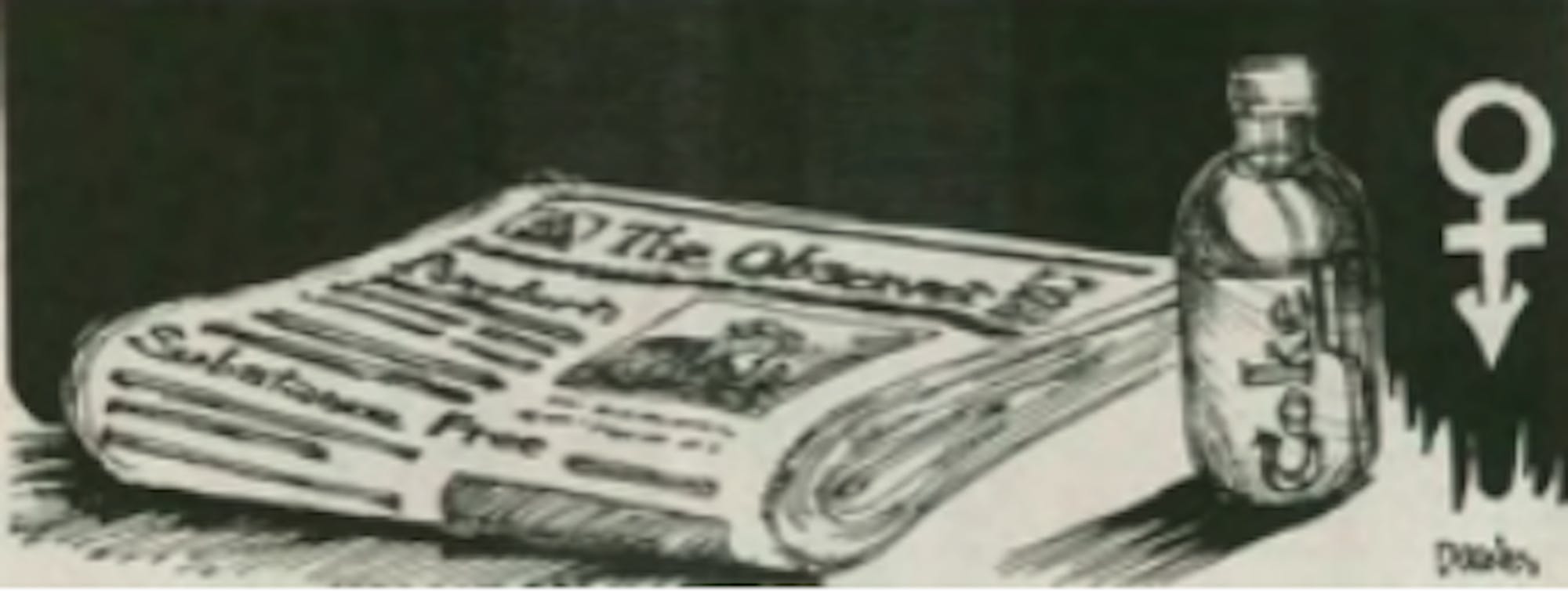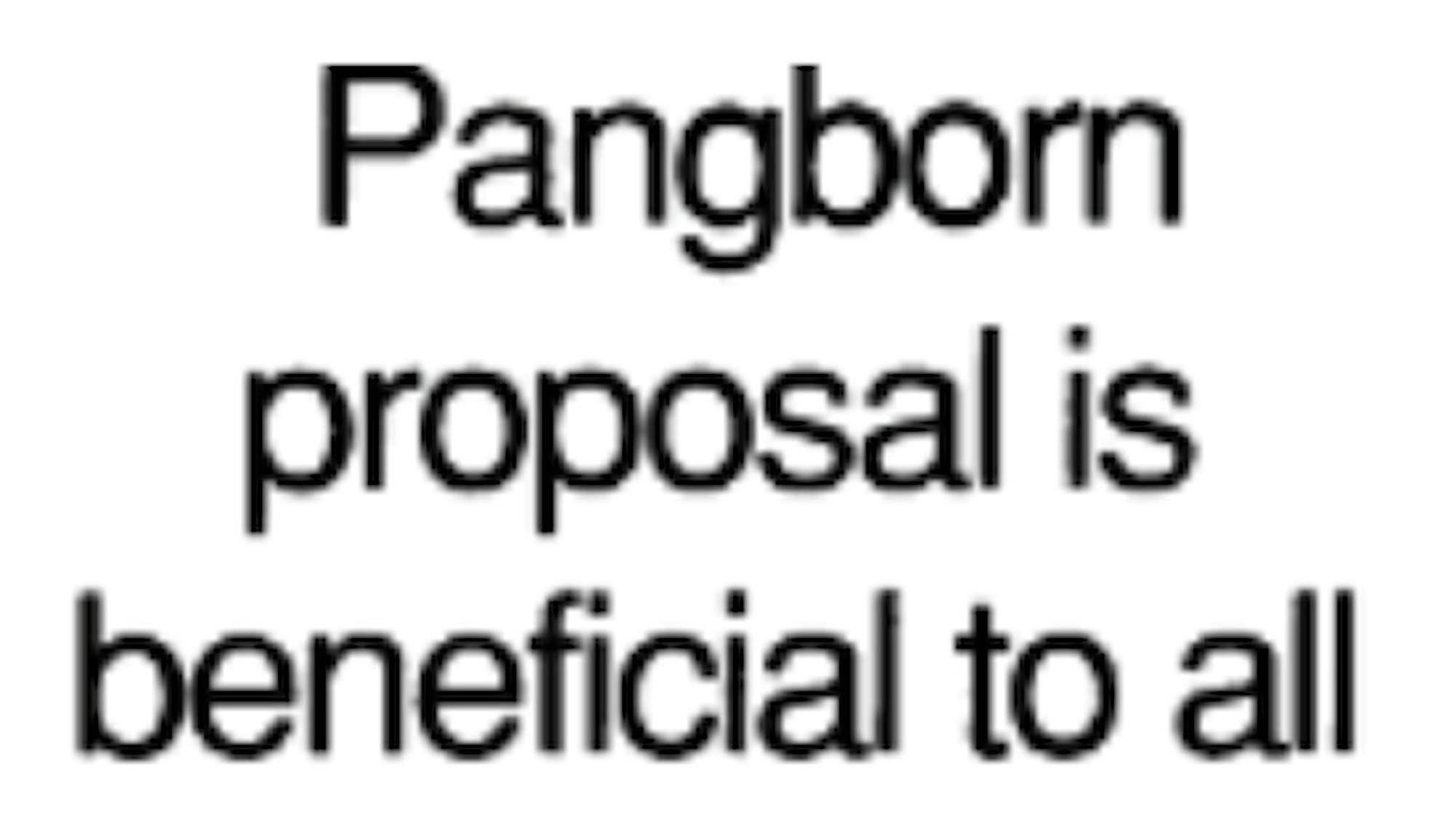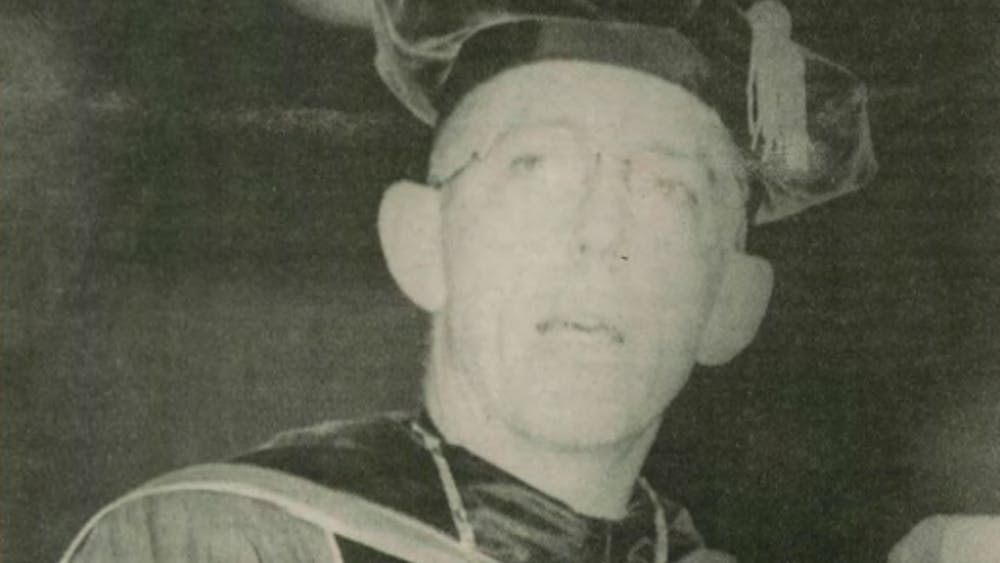
A History of Pangborn’s Repeated Dorm Conversions
Winter 1954 | Staff of Notre Dame Magazine | Dec. 4, 1991 | Sandy Wiegand and Molly Yant | Dec. 5, 1991 | Alicia Reale | Dec. 10, 1991 | Mark Woodmansee | Jan. 13, 2016 | Margaret Hynds and Jack Rooney | Researched by Bryan Fok
The announcement on October 3, 2023, regarding the impending demolition of Pangborn Hall, does not mark the first time that residents have been required to relocate. In fact, Pangborn Hall has a rich history of transitions, originally serving as a men's dorm when constructed in 1955. It later transformed into a women's dorm in 1992, had a brief stint as a swing dorm, and eventually reverted to a men's dorm in 2021.Originally, Pangborn served as temporary housing for students due to the spike in enrollment caused by the G.I. Bill. At the time, Fr. Hesburgh commented that “Pangborn Hall will enable many students who formerly lived off-campus to share more fully in the life and spirit of Notre Dame.”

The Ephemeral Dream: Co-Ed and Substance-Free Living in Pangborn Hall
Feb. 13, 1992 | John Daly & James Gannon | Feb. 28, 1992 | John Connorton | March 5, 1992 | Lisa Eaton | April 6, 1992 | Becky Barnes | Aug. 8, 1992 | David Kinney | Researched by Thomas Dobbs
In the early 1990s, Notre Dame found itself at the crossroads of tradition and change as women were increasingly represented on campus. A spirited debate ensued as students and administrators grappled with the idea of introducing co-ed and substance-free housing on campus. While the proposal aimed to modernize dorm life and align with student preferences, it also stirred up a storm of controversy and uncertainty.The Proposal That Rocked Notre Dame
In February 1992, a radical proposal emerged from the Notre Dame student body: Pangborn Hall, traditionally a male dormitory, should be converted into a coeducational residence without substance use. The students behind this bold initiative believed it would not only cater to student desires but also demonstrate their responsibility and maturity."We propose that, rather than becoming a female dorm, Pangborn Hall be turned into a chemical-free, coeducational dormitory. This novel concept would not only address student wants, but also provide students with the opportunity to show the University that we are responsible adults and that the administration's misgivings on the issue are unfounded," stated the proposal.
A Plea for Progress
In response to the proposal, some students took to the pages of The Observer to voice their support for co-ed housing. They argued that the notion that co-ed housing equated to promiscuity was unfounded and that the University could maintain its stance on pre-marital sex and parietals while offering students the choice of their living environment.
Petitions and the Winds of Change
As the debate raged on, students mobilized further bycirculating a petition in April 1992. Approximately 2,000 students signed it, urging the University to introduce coresidentiality as the cap on the number of female students was raised from 37 to 44 percent. This increase would mean around 140 more female students per year, necessitating additional housing options.
The Evolution of Pangborn Hall
Ultimately, the administration chose to fully convert Pangborn Hall into a women's dormitory, marking a significant shift in the hall's identity. This transformation was accompanied by aninflux of female students, and it presented both challenges and opportunities for the residents and rector.Over the years, Pangborn Hall continued to evolve. In 2016 it wasannounced that Pangborn would became a "swing hall," accommodating various configurations of students until it once again returned to being a men's dorm in the 2021-2022 school year. The debate over co-ed and substance-free housing at Notre Dame may have been intense in the early 1990s, but it sparked a conversation that endured for years to come. It was a reflection of a changing student body, seeking to strike a balance between tradition and progress, and a testament to the enduring spirit of dialogue and transformation at Notre Dame.








